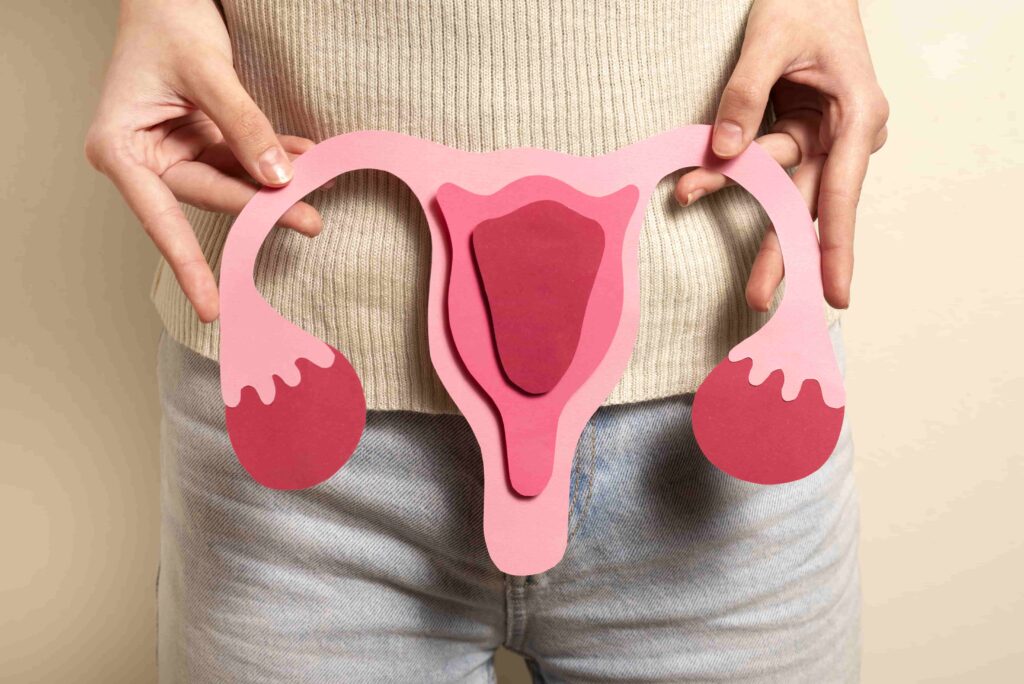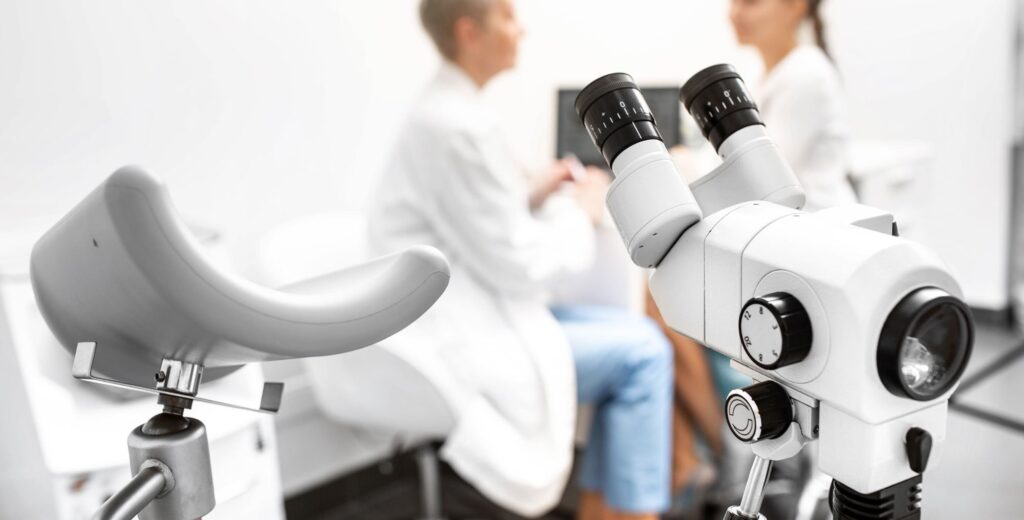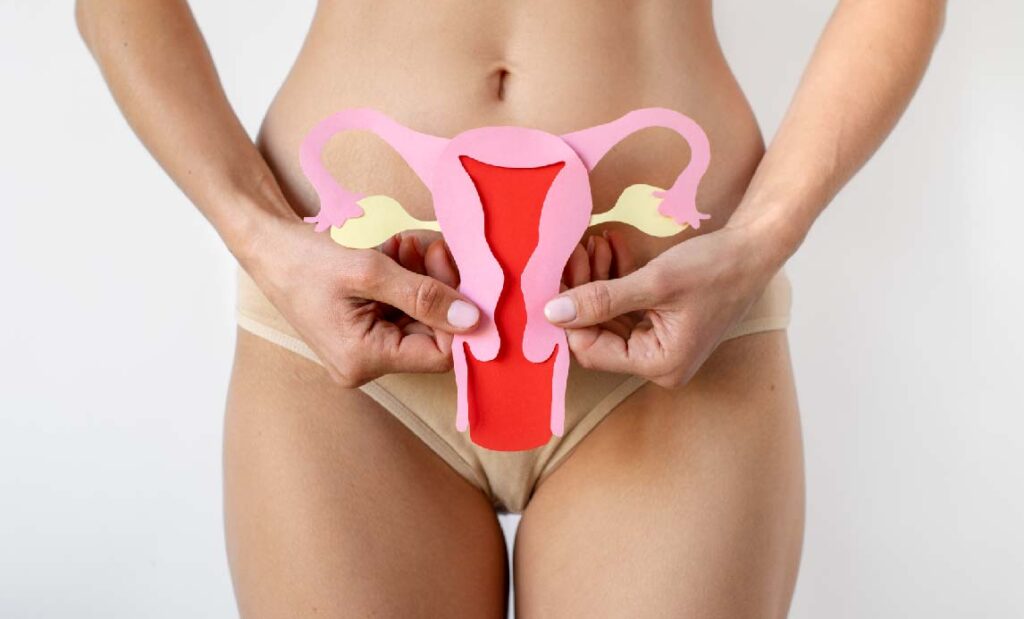The act of menstruation takes place as a result of a complex interaction between hormones called FSH and LH which are secreted by a small gland in the brain called the Pituitary Gland. At the start of the menstrual cycle, FSH stimulates one of the follicles in the ovaries to mature by day 14 of the cycle. The maturing follicle in turn produces another hormone called Oestrogen, which makes the lining of the womb thicker in preparation of receiving the fertilized egg. Following ovulation another hormone called Progesterone is secreted from the remainder of the follicle after ovulation, which is then known as the Corpus Luteum. The Corpus Luteum also acts on the lining of the womb and makes it full of nutritional value for when implantation occurs, until the embryo is able to support itself. Now the uterus is ready to receive the fertilized egg, on about day 23rd day of the cycle. If pregnancy occurs the lining will persist and become and integral part of the pregnancy until the birth. However, most of the time pregnancy does not occur and as a result the ovary stops producing Oestrogen and Progestrone. The reduction in the level of these hormones causes the lining of the uterus to be shed, which is what causes menstruation. The cycle then starts again.








